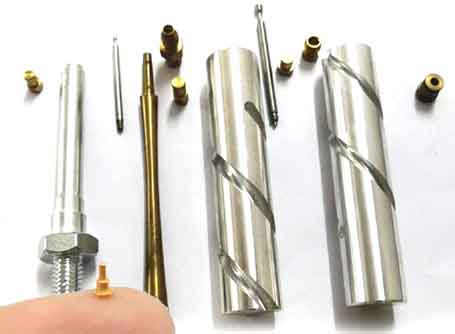La technologie d'usinage micro CNC adopte une méthode entièrement automatique pour super-finition de la surface des pièces métalliques. Par une sorte d'action mécanochimique, le matériau de 1 à 40 μm sur la surface des pièces métalliques est retiré, et la qualité de surface de la surface traitée atteint ou est meilleure que le niveau N1 de la norme ISO. La technologie d'usinage Micro CNC est principalement utilisée dans les deux domaines du polissage ultra-précis et de l'avivage ultra-précis.. Ultra-precision polishing automates the traditional manual polishing process; The super-precision brightening generates a new surface topology.
An outstanding advantage of micro-CNC machining technology is that it can give new microstructures to the surface of the part. These microstructures can improve the adaptability of the part surface to specific application functions. Such as reducing friction and mechanical differences, improving wear resistance, and improving the deposition performance of the surface before and after coating.
En général, super-precision brightening can remove secondary micro-rough surfaces. The thickness of the secondary rough surface is between 0 et 20 µm, located between the peaks of the primary micro rough surface of the part surface. The super-finishing polishing removes the primary microscopic rough surface partially or entirely, and its value is between 10 et 40 µm. Of course this depends on the initial state of the part material surface.
The materials that can be processed by microfabrication technology so far are: Annealed and hardened steel, Copper and copper alloys, fonte, Inconel nickel alloy (nickel-based alloy), titane, Pretreatment (PVD, CVD, galvanoplastie) before and after surface hard coating treatment.

Technologie de pièces d'usinage micro CNC
 English
English العربية
العربية 中文(漢字)
中文(漢字) Čeština
Čeština Dansk
Dansk Nederlands
Nederlands Suomi
Suomi Français
Français Deutsch
Deutsch Italiano
Italiano 日本語
日本語 ಕನ್ನಡ
ಕನ್ನಡ 한국어
한국어 Português
Português Русский
Русский Slovenčina
Slovenčina Español
Español Svenska
Svenska Türkçe
Türkçe

